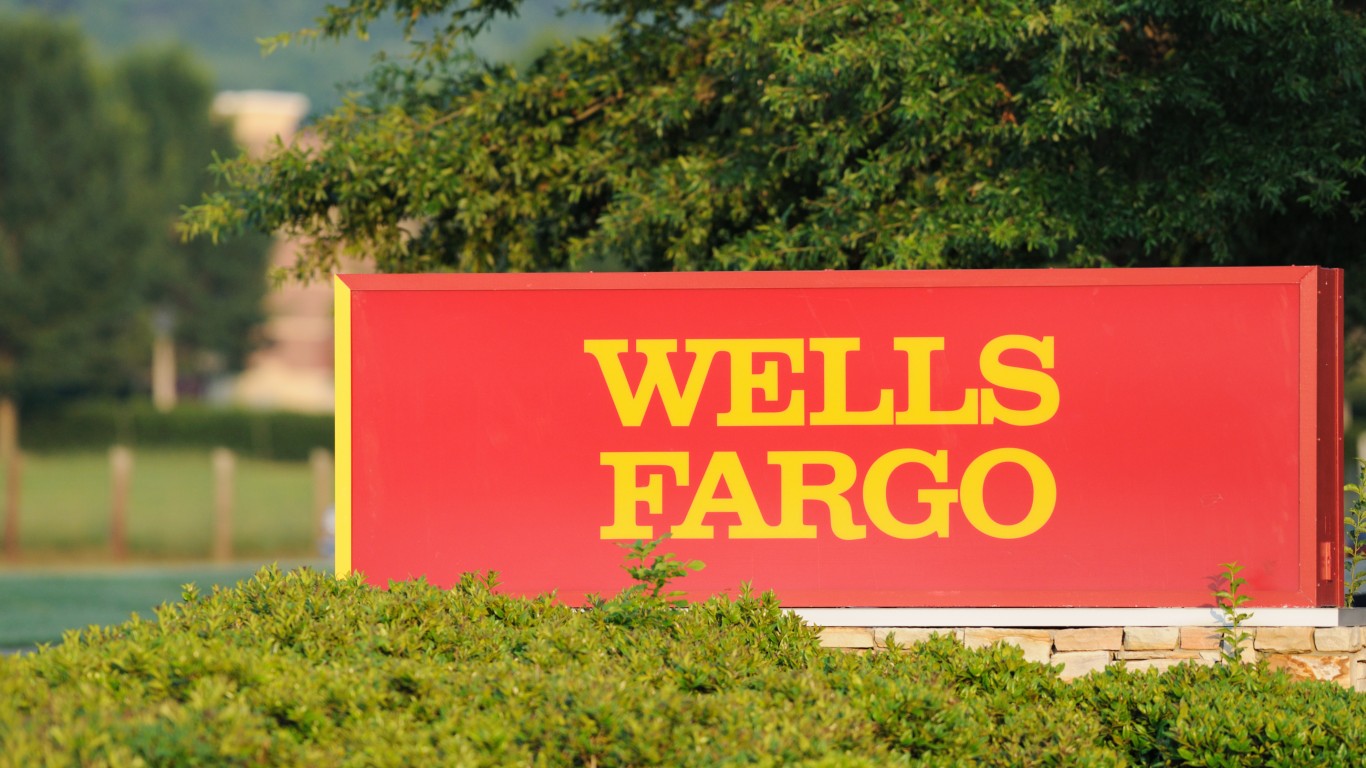Banking, finance, and taxes
Why Wells Fargo's Stock Could Rise Over 50%

Published:
Last Updated:

If there is one large bank that needs some help on its reputation and on recapturing some serious losses felt by investors, Wells Fargo & Company (NYSE: WFC) fits the bill over all others. Its stock is down a more than 50% year-to-date with its share price at close to $23.00. Wall Street is still very cautious regarding Wells Fargo, but one independent research firm seems more than 50% upside to its price target.
Wells Fargo was reiterated with a Buy rating and with a $35 price target at Argus. This independent research firm does not have investment banking and it issues its reports without the interest of generating commissions and transactions.
The only two other firms we have seen issue such aggressive price targets since the start of summer are Deutsche Bank ($34) and Robert W. Baird ($35). Most of the other analyst price targets are still handily under $30 and the Refinitiv sell-side consensus analyst price target is closer to $29.75.
This aggressive price target is on the heels of Wells Fargo’s disappointment after earnings. The money center bank generated earnings of $0.42 per share, down handily from the $1.07 per share a year earlier and below the consensus estimate of $0.45 per share. Wells Fargo’s revenue was down 14% to $18.9 billion.
According to Argus, Wells Fargo’s lending revenues were hurt by net interest margin contraction. It saw lower interest rates that it could charge on its loans and it saw a modest drop in average loans. The independent research firm noted that Wells Fargo remains a work in progress as it looks to overcome the Federal Reserve’s asset cap. The firm also sees Wells Fargo’s new CEO planning substantial cost reductions in 2021.
What was interesting about the price target remaining at $35.00 is that Argus did lower its 2020 earnings estimate to $0.12 per share from $0.15 per share. It further lowered the 2021 forecast to $2.26 per share from $2.67 per share. That cut was based on the economic recovery taking longer to play out.
The Argus report from Stephen Biggar said:
We expect near-term revenues to be hurt by lower lending volumes and narrower margins following the Fed’s emergency rate cuts; however, we believe that high loss provisions have abated following provisions of more than $13 billion in the first half of the year.
While management changes can be difficult transitions for investors, Wells Fargo is in good hands according to Argus. The firm noted that Charles Scharf as its new CEO brings strong talent to navigate an array of regulatory issues and to implement new risk management practices. And perhaps more important for investors, the firm sees Scharf as being able to restore confidence in the sales culture. His prior experience came from working at Visa and Bank of New York Mellon, and he was earlier a protege of JPMorgan’s Jamie Dimon. Wells Fargo more recently announced that Mike Santomassimo would become CFO following the retirement of John Shrewsberry.
Argus also sees many changes being required to get the Federal Reserve’s asset cap removed. On top of splitting the Chairman and CEO roles, the expected changes include amending its by-laws to require an independent chairman, electing new independent directors, enhancing risk management, and more. On top of social and cybersecurity enhancements, the report sees the bank enhance risk oversight as well as new heads for overseeing governance and nominating committees.
Thursday’s report further noted that Wells Fargo has said it would require about $10 billion in cost savings to match the efficiency of peers. One effort to help this is by continuing to divest noncore businesses with low returns or which have high capital requirements. The bank has already divested businesses related to health benefit services, insurance, global fund services and shareholder services over the past two years.
Argus also noted that Wells Fargo has an elevated P/E ratio versus peers due to depressed earnings along with revenue and credit cost headwinds from the coronavirus. Biggar’s report said:
Still, we expect an earnings rebound in 2021 and continue to see a strong potential catalyst for the shares in the removal of the asset cap. Our target price of $35 implies a multiple of 15-times our 2021 EPS estimate… The stock trades at 0.73-times tangible book value, well below historical levels as the company works through depressed earnings caused by low interest rates and higher loss provisions. The stocks also trades at a discounted 10-times our 2021 EPS estimate, which we believe undervalues the franchise.
Wells Fargo’s stock was trading at $25.30 last Friday ahead of this week’s earnings report. It then fell to a low close of $22.95 on Thursday after three days of selling pressure. Wells Fargo is also under dividend restrictions.
24/7 Wall St. would always remind its readers that investors should never use a single analyst research report as a sole basis for buying or selling a stock. That would be true for sell-side research and independent research alike.
Retirement planning doesn’t have to feel overwhelming. The key is finding expert guidance—and SmartAsset’s simple quiz makes it easier than ever for you to connect with a vetted financial advisor.
Here’s how it works:
Why wait? Start building the retirement you’ve always dreamed of. Click here to get started today!
Thank you for reading! Have some feedback for us?
Contact the 24/7 Wall St. editorial team.